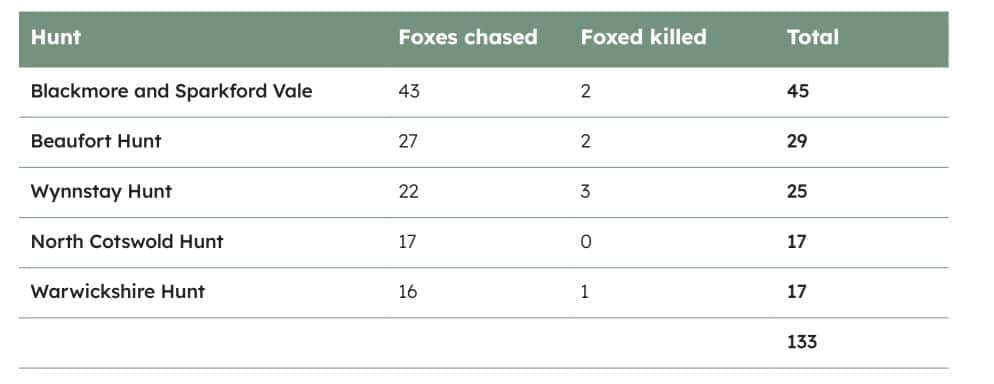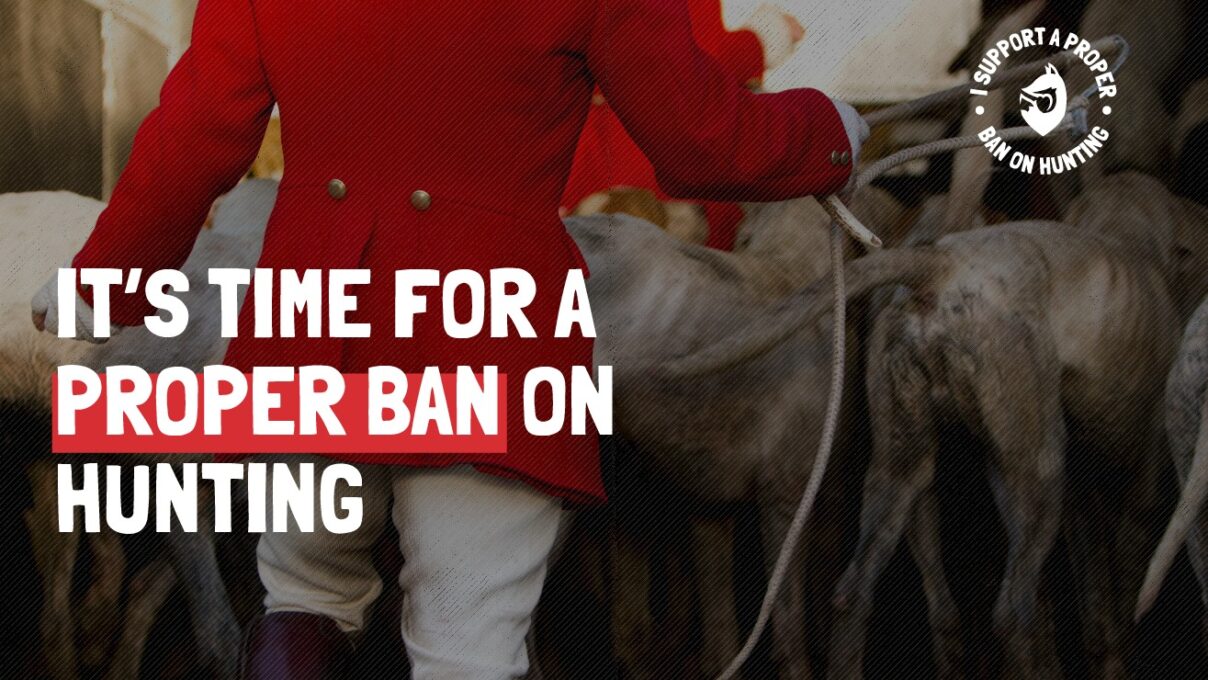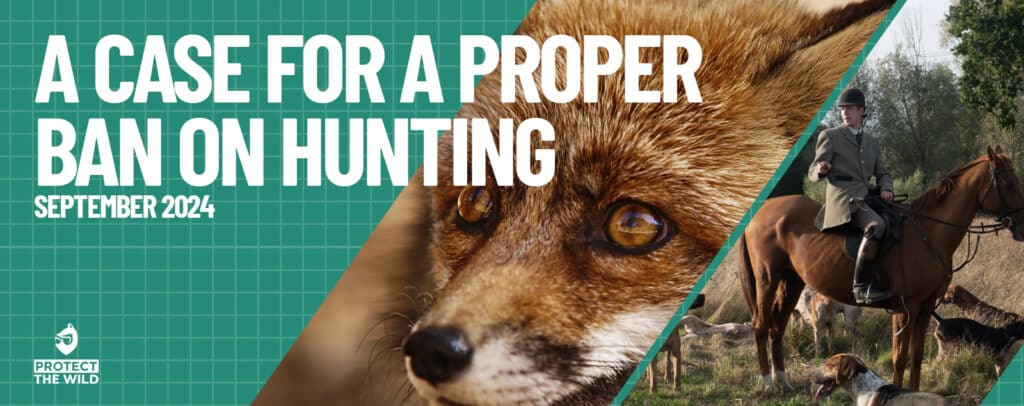Protect the Wild’s second annual report on hunting took over six months of meticulous effort by Glen Black, during which he reviewed more than 2,000 individual reports, resulting in one of the most comprehensive analyses of hunting with hounds in modern history.
This report will be pivotal in the ongoing campaign to end hunting once and for all. And it stands as a rallying cry for change on behalf of the saboteurs and monitors who work tirelessly in the field. Without their dedication, this report would not have been possible.
A Case for a Proper Ban on Hunting is Protect the Wild’s second annual report on the hunting industry. The report covers the 2023/24 season, accounting for incidents from July 2023 to April 2024. It intends to provide reliable, evidenced data on the actions of hunts across England and Wales in a single location. Analysis of that data is then provided to unpick some of the most significant findings.
Protect the Wild will use the report as grounds to push for a law that will end hunting in England and Wales once and for all. We have also made the findings public so that those who may want to use it for their own work can do so. All data was gathered from reports and messages from hunt saboteur and monitor groups, members of the public, affected groups or organisations, and the police.
- To read the full report download the PDF here
Headline findings

A Case for a Proper Ban on Hunting’s headline finding is that hunts across England and Wales continue hunting foxes, hares and deer despite the government having outlawed it on 18 February 2005. During the 19th season since the Hunting Act came into force, hunts persecuted a total of 581 foxes, hares and deer:
- Foxes chased – 335
- Foxes killed – 29
- Hares chased – 40
- Hares killed – 1
- Deer chased – 150
- Deer killed – 26
The research for A Case for a Proper Ban on Hunting examined 2312 reports, which means that, when averaged, one in four meets resulted in hunts chasing or killing wildlife. These are not the numbers of a respectable industry that claims it is doing everything it can to avoid harming wildlife.
Also, 124 instances of hunts interfering with badger setts were publicly reported. A separate law protects setts, the Protection of Badgers Act 1992, highlighting how hunting contravenes multiple laws to function.

Another headline finding is that hunts continue making use of aggressive and violent behaviour to protect their activities – the worst are highlighted in the table above.
There was a total of 239 incidents of minor attacks, which included everything from targeted slurs (racism, transphobia, etc) through to pushing and shoving. A further 16 incidents were considered major attacks. These included causing serious injuries to activists or members of the public, attacking activists with weapons, and destroying sab or monitor group vehicles.
It’s clear from these two sets of findings alone that this minority pastime is anti-social, anti-humane and deeply unethical in its conduct. The fact that this has continued nearly 20 years after it was supposed to have ended makes it all the more outrageous.
Robert Pownall, CEO of Protect the Wild, emphasises:
“The evidence is there for all to see. Don’t be fooled by the laughable ‘National Trail Hunting Day’. The hunts are very much still at it and until this govt works to bring about legislative change then we will continue to see the illegal persecution of wildlife across the country. It’s time for a new proper ban on hunting with hounds.
-
To read the full report download the PDF here
Positive Changes
The findings weren’t all doom and gloom, though. The data also highlighted some positive changes with regards to hunting. It showed that some constabularies have started taking the anti-social behaviour of hunts seriously as a crime. Gloucestershire Police were clear leaders in this respect, but Avon and Somerset Police, Cheshire Police and Suffolk Police were also responsive to incidents during hunt meets.
For the first time there were also clear signs of a co-ordinated effort by some hunts to legitimately trail hunting by following an artificially laid scent. Eight hunts were seen doing this more than once during the season, with each engaging in end-to-end trail hunting. A question mark remains hanging over the practice, though, because reports showed that even during trail hunting hounds sometimes rioted onto wildlife. That suggests that it’s not the style of hunting that’s the problem but hunting itself: packs of hounds roaming the countryside are an inherent danger to the animals around them.

Any law that aims to protect wildlife from harm by hunting with hounds must therefore not allow hunts to continue taking hounds into the countryside under any guise or pretense. This type of law will also protect activists and members of the public from the hunting industry’s anger management problems.
-
That’s where Protect the Wild’s Hunting of Mammals Bill and A Case for a Proper Ban on Hunting come in. The latter provides factual evidence showing why the former is needed, and why a new law is needed immediately.
-
To read the full A Case for Change… report download the PDF here
| SPECIAL ACKNOWLEDGEMENT
This report wouldn’t have been possible without the courageous monitors and saboteurs out in the field standing up to the hunts. Their tireless work throughout the hunting season and their dedication in writing reports on their experiences continues to be absolutely vital. Without direct action the public cannot be shown what really goes on in the British countryside. To thank the brave sabs and monitors who witnessed all of this first hand, please consider supporting your local hunt saboteur or monitor group. |

